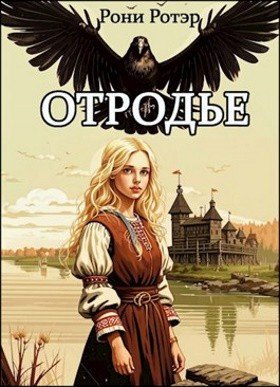Berlin in Hollywood, 1939 –1955
modify a 1913 line by Austrian writer Robert Müller,38 no longer exist—
save as figments of Hollywood fantasy production. At the end of the great divide between modernism and mass culture, New and Old World recognize and penetrate each other, not as experiential realities but primarily in the form of media constructs, as hybrid imaginaries that undo any stable notions of cultural specificity and difference, of the familiar and the other, of home and displacement. As it closes the modern gap between high and low, Bernhardt’s Interrupted Melody thus also concludes the peculiar narrative of German exile and assimilation in Hollywood that I have traced in this and the preceding chapters of part 2.
Bernhardt’s contemporary German audiences, however, were by no means ready to give up their aesthetic hierarchies and notions of cultural fixity. Interrupted Melody premiered in West Germany on October 28, 1955, only five months after its original American release. It received mixed reviews from West German critics. Some praised the film’s melodramatic intensity; others lamented the “rather embarrassing” representation of Lawrence’s physical breakdown and her prolonged illness.39 All reviewers seemed to agree, however, that Bernhardt’s film did not suit every viewer’s taste. Edmund Luft speculated in Filmblätter, for instance, that Interrupted Melody would find its “most tearful and prodigal audience” among the female public,40 whereas Evangelischer Film-Beobachter recommended the film exclusively to “opera connoisseurs (older than 16).”41 West German film critics of the mid-1950s expected either cultivation or commerce. In their opinion the commodification of European high art in Interrupted Melody simultaneously impaired the film’s artistic quality and its popular appeal. Even weepy women or serious opera connoisseurs, according to contemporary West German reviews, could therefore draw only “fragmentary pleasure” from this Hollywood feature.42
In 1947 director Wolfgang Staudte had argued that German filmmaking after Hitler should start from scratch again: “We stand at the crossroads.
Will [German] film choose the laborious hike on the narrow path of art’s domain, bearing the burden of an inner accountability? [O]r will it carry a light parcel of wretched irresponsibility on its merry march down the comfortable street of cheap effects in the empire of a mediocre entertainment industry?”43 By the mid-1950s Staudte’s rhetorical question had lost little of its urgency. Experiencing a brief postwar golden age, the West German film industry offered light-entertainment products whose domestic appeal relied heavily on the role of ex-UFA stars, directors, and genre conventions.
Middle-class cineastes, on the other hand, as they organized themselves in the so-called Filmklubbewegung (film club movement), hoped to give Ger-
08-C2205 8/17/02 3:39 PM Page 257
Isolde Resurrected
/
257
man film culture a new artistic spin. They promoted a resurgence of the older “Kulturfilm” genre to fortify West German film audiences against foreign influences, commercial imperatives, and illusionist desires.44 It should thus come as no real surprise that Interrupted Melody failed to muster en-thusiastic responses even within the different sectors of West German film culture. The film did not cater to those devoted to the Heimatfilm and its escapist privileging of ecology over economy, nor was it designed to satisfy the cineastes’ call for autonomous culture instead of commerce. Although Bernhardt’s staging of Wagner might have pleased rebounding German Wagnerians, the film’s integration of elite culture and capital, the outback and the cityscape, clashed too drastically with the expectations of a German film public eager to see the rise of a new national cinema yet utterly divided about where to start and which legacies to endorse.
a n u n w i l l i n g m o d e r n i s t In spite of this symptomatic failure of Bernhardt’s film in postwar Germany Bernhardt decided to explore new avenues of directing films in Europe after completing a five-picture contract with MGM in 1956. In 1960 he shot Stefanie in Rio, a coproduction of Arthur Brauner’s Central Cinema Comp.–Film (CCC–Film) and UFA; in 1962 he filmed Damon and Pythias in Italy, an MGM pageant loosely based on Friedrich Schiller’s ballad “Die Bürgschaft.” Yet like Robert Siodmak’s and in particular Fritz Lang’s experiences in West Germany during the late 1950s, Bernhardt’s return to postwar Europe was remarkably unsuccessful and did not open up new creative possibilities. Representative of a largely “unknown cinema of emigration,”45 Bernhardt was unable to find a place of his own within the altered landscapes of postwar European filmmaking. He quickly buried his hopes to patch the interrupted melodies of his career and returned to the United States. In 1963 Bernhardt was displaced again, back in Hollywood directing his last film, the comedy Kisses for My President.
The figure of displacement is often regarded as one of the most defining features of twentieth-century cultural history, whether or not we seek to divide this century into modernist and postmodernist eras respectively.46 For Fredric Jameson modernism is predicated on the systematic displacement of unified traditions and identities; modernism produced ruptures between here and there, now and then, which subverted our ability to grasp any sense of meaningful totality.47 Reconsidering Jameson’s heroic narrative of modern displacement, Salman Rushdie in turn has emphasized the perspective of those involuntarily displaced by peculiarly modern constellations of
08-C2205 8/17/02 3:39 PM Page 258
258
/
Berlin in Hollywood, 1939 –1955
power. He concludes that “those of us who have been forced by cultural displacement to accept the provisional nature of all truths, all certainties, have perhaps had modernism forced upon us.”48
Curtis Bernhardt’s extensive filmography conforms to Rushdie’s notion of involuntary modernism. Bernhardt’s cinema, from the very beginning of his career to its end in the early 1960s, was remarkably provisional and contingent. It traversed incongruous genres and styles, catered to completely different audiences and ideological demands, and repeatedly fused diverse elements into hybrid cinematic expressions. Not one but many truths surfaced in Bernhardt’s cinema of uncertainty. Chameleon-like, Bernhardt captured the American fantasies of Goebbels’s emerging culture industry as much as he proficiently used the most advanced technologies to poach on European culture and make postwar Hollywood entertainment more respectable. Bernhardt’s career was that of a highly flexible professional displaced by tempestuous times into an ambivalent kind of modernism. It would clearly go too far to consider his work as that of an auteur. But his cinema nevertheless bore the signature of an uneasy modernist who yearned for more stability, certainty, and place yet who at the same time was capable of shaping the daydreams of an extremely unsettled, ever-shifting present.
Perhaps, too, it was because of his highly ambivalent modernism that Curtis Bernhardt showed little interest in the international emergence of young cinemas after the end of his active career as a Hollywood director. In stark contrast to Douglas Sirk, Bernhardt had no desire to have contact with the young German filmmakers who aspired to redefine German cinema in the wake of the 1962 Oberhausen manifesto. Many of these filmmakers, as John Davidson has argued recently, stylized themselves as colonized subjects marginalized by the double legacy of Nazism and Americanism. Eager to speak for an “other” Germany, these young filmmakers valorized narratives of national disidentification and images of displacement. Their self-promotion as colonized subjects in fact “developed into the primary international genre expectations about the new German national cinema.”49 The Hollywood retiree Curtis Bernhardt found nothing in this cinema of deterritorialization that echoed his own narrative of displacement. Bernhardt, whose emigrant cinema of mercurial emotions and provisional gestures was largely forgotten by then, looked with strong aversion on the work of younger German filmmakers. No longer obliged to masquerade as a modernist, Bernhardt commented four years before his death in 1981 on Werner Herzog’s images of madness and nonidentity simply by saying, “I hate these new films from Germany. I think they are banal, conventional and pretentious.”50
09-C2205 8/17/02 3:39 PM Page 259
Epilogue:
“Talking about Germany”
The history of German cinema is filled with sudden departures and enforced demises. It is a history of disruptions and displacements, of competing memories and utopias. Radical industrial caesuras impacted the course of this cinema as much as did shifting political constellations and transnational alliances. How to group the many ambivalent moments of German film history into meaningful periods remains an unresolved issue. The continued debates over adequate models of periodization reveal only the highly unsettled nature of this cinema itself. Although more recent scholarship has often rightly emphasized the underlying continuities among Weimar, Nazi, and postwar German film culture, it is impossible to consider even seemingly coherent phases of German film history as homogeneous or unequivocal. German cinema may be seen at its most classical, popular, and German when it was organized under the direction of Joseph Goebbels. But the history of Nazi film does not simply entail the story of how German cinema tried to drive Hollywood out of Europe; it equally includes the disjointed narrative of Berlin in Hollywood, the emigration of German-Jewish film practitioners and their integration into the classical Hollywood studio system. Whether we write the history of German film from an industrial, political, stylistic, or audience-oriented perspective, whether we record the chronicle of its directors, stars, production codes, or genres, there is no way around understanding German national cinema as necessarily plural—as a differential cinema in which incongruous meanings and practices, fantasies and recollections, institutional frameworks and ideological mandates coexist in ways they don’t necessarily in other national cinemas.
In eight paradigmatic readings The Dark Mirror has examined two inter-related chapters in the split narrative of German twentieth-century cinema.
259
09-C2205 8/17/02 3:39 PM Page 260
260
/
Epilogue
Although clearly no longer persuaded by Horkheimer and Adorno’s equation of the American culture industry and German National Socialism, the preceding analyses nevertheless have repeatedly revisited Adorno’s work in particular in order to assess the positions of German cinema between Hitler and Hollywood. Adorno, I believe, remains a crucial figure in the effort to challenge some of the most intractable taboos and blind spots of German film history. His work proves helpful when exploring the ideological import of “apolitical” Nazi entertainment features, as well as when conceptualizing German exile filmmaking as part of a “minor” cinema, a cinema emphasizing that “wrong life cannot be lived rightly.”1 To be sure, contrary to Adorno’s assumption, I have argued that Nazi feature films were by no means entirely readable in Hollywood terms, nor did Hollywood studio films necessarily echo the aesthetic designs and modes of spectatorial address typical for Nazi cinema. Throughout this book I have stressed the unique role of sound and music in the formation of German national cinema after 1930. The legacy of German national cinema, I have submitted, was never merely visual. Instead, this cinema sought to become national by rearticulating the centrality of sound and music to nineteenth-century definitions of German national identity. Whether situated in Berlin or Hollywood, the German film practitioners of this book were all engaged in recuperating or transforming the Wagnerian templates of modern German culture. Their work indicated competing projects of modernizing romantic idioms, of negotiating late romanticism and twentieth-century modernism within the realms of modern mass culture. In spite of his own equation of Hollywood and fascism, Adorno’s work provided many valuable insights into the different uses of “German” sound on either side of the Atlantic. Itself part of the narrative of displacement told in these pages, Adorno’s work—in spite of its many fallacies and overgeneralizations—remains relevant because it urges us to understand the structuring binaries of modern culture (for example, “modernism” vs. “mass culture,” “legitimate art”
vs. “the popular,” “America” vs. “Germany”) not as radical alterities but in their interconnectedness, hybridity, and historicity.
It is in this sense that the foregoing chapters evaluate how German-speaking directors, actors, and film composers between the early 1930s and the mid-1950s tried to negotiate conflicting cultural codes in their work, how some aspired to reify them into tokens of radical difference and how others set out to merge them into transient and mingled expressions. Both parts of this study depict German cinema as a cinema of imaginary or real voyages, of spurious or concrete displacements, a cinema of traveling and migrancy in which shared meanings were always in open or hidden com-
09-C2205 8/17/02 3:39 PM Page 261
Epilogue
/
261
petition with alternative sets of meaning. In all of the above readings we witnessed films testing out other images, sounds, and identities; wandering across imaginary land-, city-, and mindscapes; mimicking pasts that never existed or promising futures that would or could never materialize. In each scenario temporal overlays and historical nonsynchronicities went hand in hand with spatial and cultural border crossings. Whereas in most of the films examined in part 2, however, strategies of cross-cultural masquerade, assimilation, slippage, and doubling gave rise to more fluid and decentered notions of identity, the texts of part 1 primarily domesticated or erased the other in order to refix normative categories of nationality, class, gender, race, and cultural status. What simultaneously connects and separates the films of Nazi and exile cinema, then, is how they explore the innate capacity of cinematic machines to unsettle naturalized topographies and temporalities, how they either work through or ultimately disavow the utopian power of film to “burst this prison-world asunder by the dynamite of the tenth of a second, so that now, in the midst of its far-flung ruins and debris, we calmly and adventurously go traveling.”2
The categories of traveling and exile enjoy great currency in the postcolonial discourses of our own times, discourses that often blur the coordinates of historical experience to elaborate a new, postmodern, unfixed notion of universal subjectivity.3 Anticolonial criticism today, rightly challenging the binary tropes of colonial discourse, valorizes physical and symbolic voyages because they open up more complex realities of ongoing and potentially transgressive intermingling. But in often ontologizing no-madism, homelessness, and hybridity into quasi-automatic sites of resistance and subversion, the postcolonial project tends at the same time to normalize individual histories of involuntary displacement and thus to silence the suffering that speaks to us from the past. It can also reintroduce through the theoretical backdoor the very conceptual separation it hopes to debunk—just with inverted value signs.4 Rather than celebrating difference and unfixity per se as signs of empowerment, rather than embracing exoticized notions of otherness or cross-cultural intermingling as new normative standards, the point then is to define operative frameworks according to which we can reasonably assess the concrete meaning of displacement and discriminate among different politics of symbolic transaction.
























